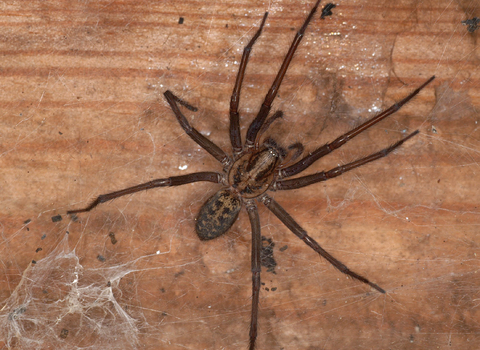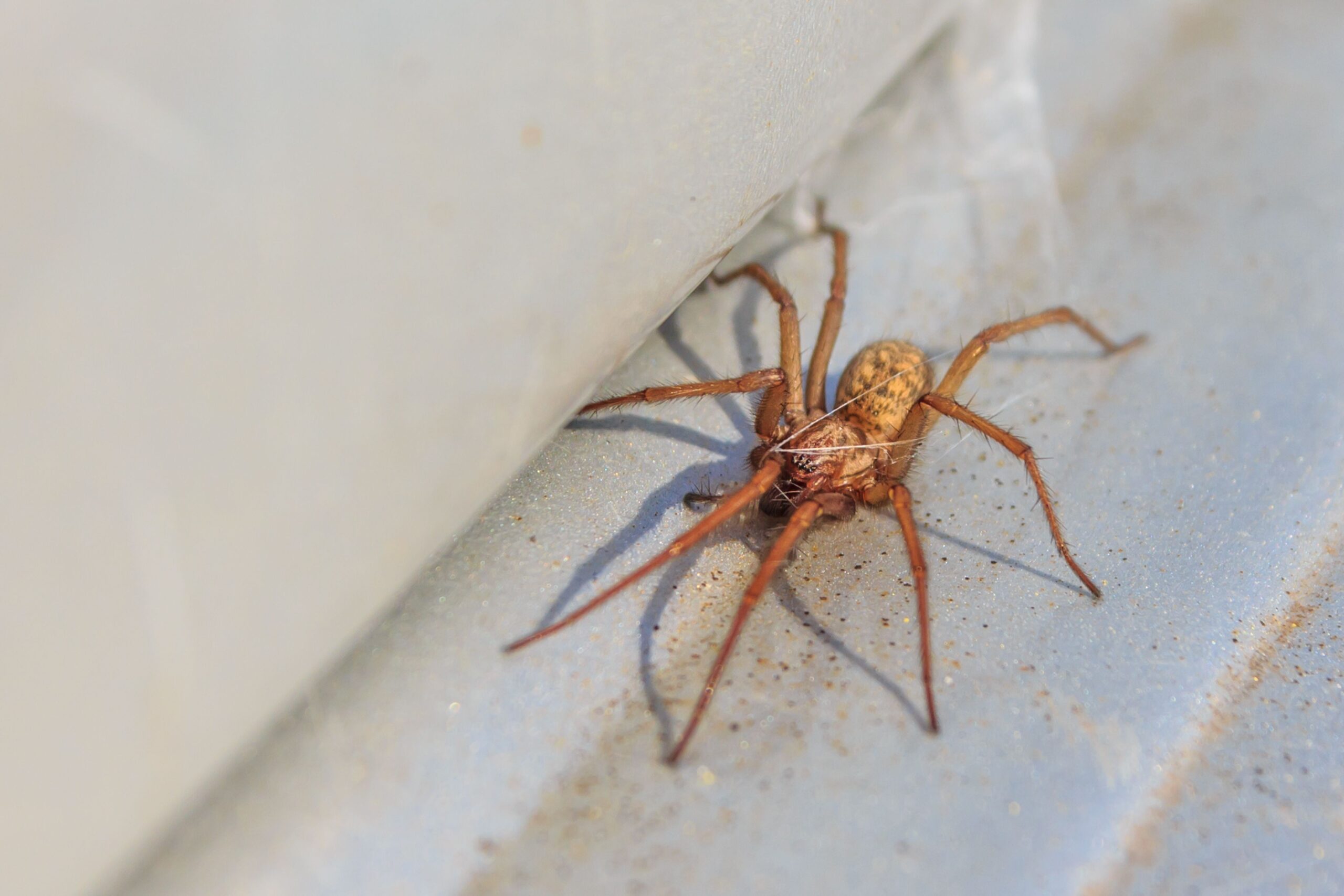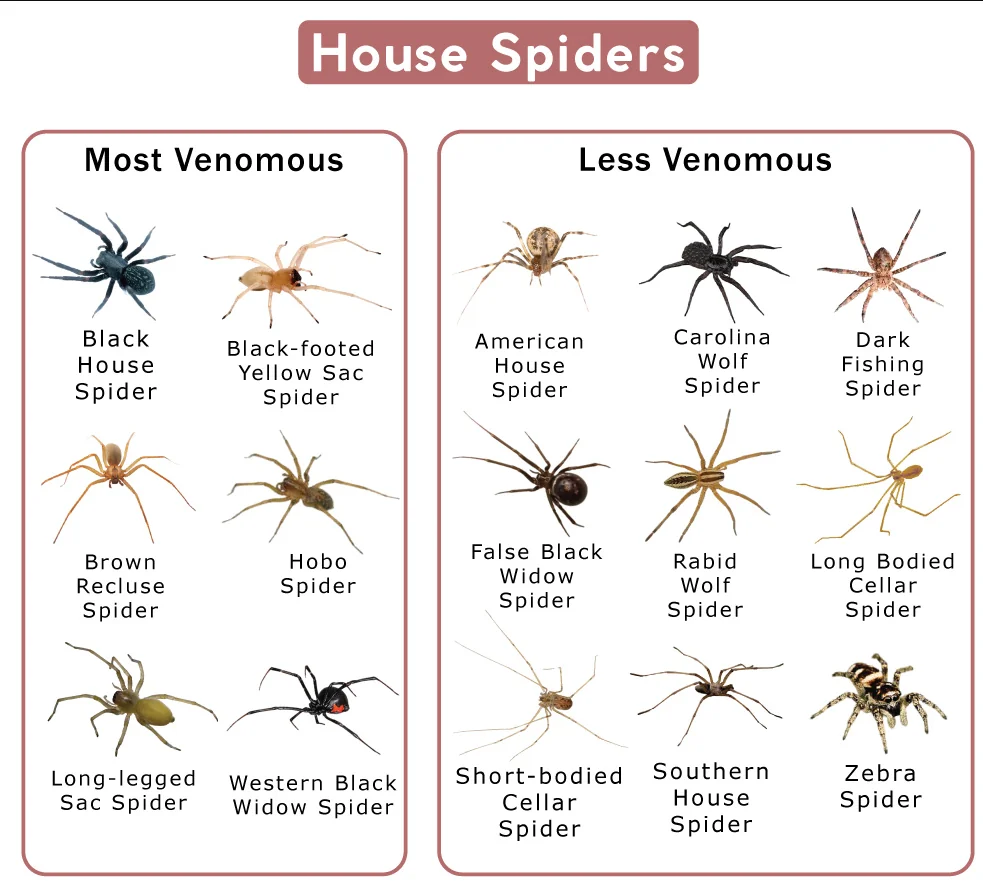Florida’s subtropical environment—featuring warm weather, ample humidity, and brief, mild winters—creates an ecosystem where various insects thrive, and wherever insects are plentiful, spiders inevitably follow. Although many species of spiders are harmless and even beneficial outdoors, a large indoor population can cause alarm, especially if venomous species (like widow spiders) appear. In communities such as Melbourne—where residential expansion meets commercial and tourist interests—spiders can settle unobserved if no one intervenes. This service page explains why spiders do so well in Florida, red flags for an infestation, and why hiring a professional spider exterminator is often the most reliable solution for restoring your home or business to a web-free, more comfortable interior.
Whether you manage a property in Melbourne or oversee homes and rentals in Melbourne Beach, Cocoa Beach, Cocoa, Cape Canaveral, Merritt Island, or Rockledge, identifying spider activity early—and responding swiftly—prevents larger colonies, safeguards occupant well-being, and maintains a cleaner, more inviting atmosphere for everyone.
Why Spiders Thrive in Florida
Mild Winters and Year-Round Activity
In colder regions, harsh winters kill or drastically reduce spider populations. Florida’s mild cold season rarely delivers extended freezing conditions, letting spiders remain active. Indoors, climate control ensures stable temperatures (around 65–85°F), keeping spiders comfortable and able to feed or reproduce without a seasonal pause.
High Humidity
Many spider species favor humid conditions that preserve their hydration and support insect prey. Florida’s constant moisture—bolstered by regular rain, irrigation, or near-coastal mists—ensures consistent insect populations, luring spiders seeking abundant food. Shaded yards, moist corners, or dim crawl spaces can become spider havens unless checked.
Abundant Insects
Since spiders feed on insects, an area with robust insect presence is prime spider territory. Porch lights, open doors, or unsealed windows draw flying or crawling bugs, inadvertently inviting orb weavers or house spiders to set up webs close by. Suburban or rural pockets around Cocoa or Cape Canaveral, for example, see frequent bug activity that further sustains spider populations.
Frequent Movement of Goods and People
Tourism, seasonal stays, or secondhand furniture can introduce spiders or their egg sacs unknowingly. A single hidden egg sac can hatch multiple spiderlings who disperse into different rooms. In multi-unit settings—apartments, hotels, or commercial buildings—spiders spread from shared walls or occupant belongings, thriving in corners if unnoticed.
Multiple Spider Species
Florida hosts various spider species, each with unique nest habits:
- House Spiders: Commonly spin messy webs in corners or ceilings.
- Orb Weavers: Create large, circular webs outdoors, often near lights or in gardens.
- Widow Spiders: Can pose a bite risk if threatened; typically found in cluttered garages or dark spaces.
- Wolf Spiders: Hunt on foot rather than spinning webs, sometimes entering homes in search of prey.
All can multiply rapidly in the mild climate, underscoring the importance of occupant vigilance and timely professional solutions.

Telltale Signs of a Spider Infestation
- Frequent Webs Indoors
- While a stray web might be normal, discovering multiple webs in corners, windows, or near ceilings indicates a rising presence.
- Orb webs outdoors near porch lights or messy cobwebs by baseboards indoors also suggest stable spider feeding areas.
- While a stray web might be normal, discovering multiple webs in corners, windows, or near ceilings indicates a rising presence.
- Egg Sacs
- Small, ball- or disc-shaped sacs affixed to webs, furniture undersides, or in dark corners.
- Each sac may hold dozens—potentially hundreds—of spider eggs, risking a sudden population jump if left.
- Small, ball- or disc-shaped sacs affixed to webs, furniture undersides, or in dark corners.
- Multiple Spider Sightings
- Encountering several spiders daily in different rooms signals they’re finding ample food and safe nesting spots.
- Certain species roam floors or walls hunting, while others remain near their webs. Both can proliferate if ignored.
- Encountering several spiders daily in different rooms signals they’re finding ample food and safe nesting spots.
- Insect Shells or Droppings
- Webs filled with moth or fly remnants, exoskeletons, or scattered bug parts near hidden corners show active spider feeding.
- Consistent insect debris points to an ongoing spider population.
- Webs filled with moth or fly remnants, exoskeletons, or scattered bug parts near hidden corners show active spider feeding.
- Possible Bites
- Spiders typically avoid people, but if occupant or pet contact traps them, bites may occur.
- Venomous species (widows) can induce severe pain or muscle cramps. Even harmless bites can cause swelling or itching.
- Spiders typically avoid people, but if occupant or pet contact traps them, bites may occur.
- Musty or Unused Spaces
- Garages, sheds, attics, or infrequently visited storage often accumulate more webs over time if unmonitored or cluttered.
- Spiders exploit dark, quiet spots to anchor egg sacs and feed on passing insects.
- Garages, sheds, attics, or infrequently visited storage often accumulate more webs over time if unmonitored or cluttered.
Risks of Ignoring Spiders
Growing Populations
Female spiders lay multiple egg sacs. Without removal, newly hatched spiderlings spread to build additional webs. A minor spider presence can quickly turn into an infestation that demands more extensive treatment measures.
Fear, Stress, and Potential Bites
Many people are uneasy around spiders, particularly venomous varieties. Home or workplace morale suffers when webs appear in corners, or occupant fear disrupts normal routines. Though most Florida spiders aren’t lethal, ignoring them heightens risk of unpleasant bites.
Web Clutter and Indoor Appearance
Accumulated webs across ceilings or near entrances reduce a property’s cleanliness perception, making commercial venues unappealing to customers. In homes, occupant frustration escalates if webs keep reappearing after repeated DIY cleanings.
Overlapping Insect Issues
A major spider presence may signal an underlying abundance of insects fueling their population. Not addressing the root insect attraction can result in partial spider control that quickly reverses once insects reappear.
Harder, Costlier Removal Later
Untreated spider colonies producing egg sacs in multiple rooms or yard corners complicate extermination. Thoroughly eliminating a widespread population requires more occupant disruption and repeated professional visits than addressing early sightings.
Why a Professional Spider Exterminator Is Essential
Specialized Inspections
A spider exterminator systematically inspects attics, garages, basements, or behind large furniture for webs and egg sacs, identifying spider species. Proper identification (house spiders vs. widow spiders) shapes which insecticides, traps, or occupant measures will be most successful.
Multi-Method Elimination
Professionals typically remove webs physically, vacuum or steam where needed, and strategically place insecticides or dust along cracks or corners. They may also treat underlying insect problems fueling spider presence, ensuring a more durable reduction.
Safe, Targeted Product Use
DIY chemical sprays risk occupant or pet health if overused. Exterminators employ regulated insecticides in minimal amounts, focusing on spider nesting areas (like baseboards, eaves, or behind appliances). This approach maximizes spider kills with minimal occupant exposure.
Addressing Insect Prey
Spiders flourish where insects abound. Professionals can advise or perform insect control—like roach or ant treatments—reducing spider food sources. Combined occupant sanitation ensures spiders lack the prey needed to remain indoors.
Ongoing Follow-Up
New spiders may hatch from overlooked egg sacs weeks later. Many exterminators schedule check-backs or remain available if occupant sightings persist. Adapting products or reapplying in missed corners finalizes complete spider clearance.

Typical Methods for Spider Treatments
- Property Assessment
- Technicians explore corners, ceilings, behind furniture, or attic beams for webs, egg sacs, or insect remains.
- Determining spider species (widow, orb weaver, house spider) clarifies approach.
- Technicians explore corners, ceilings, behind furniture, or attic beams for webs, egg sacs, or insect remains.
- Web and Egg Sac Removal
- Physical vacuuming or brushing webs cuts off active spiders’ living spaces.
- Disposing of egg sacs prevents a new generation from dispersing inside.
- Physical vacuuming or brushing webs cuts off active spiders’ living spaces.
- Insecticides and Dusts
- Residual sprays or dusts in cracks, around baseboards, or overhead eaves kill spiders crossing treated surfaces.
- Minimizes occupant chemical exposure by focusing on known spider hideouts rather than entire floors.
- Residual sprays or dusts in cracks, around baseboards, or overhead eaves kill spiders crossing treated surfaces.
- Insect Growth Regulators (IGRs) & Prey Control
- If insect prey is abundant, controlling roaches, flies, or ants simultaneously reduces spider viability.
- IGRs can disrupt insect cycles, depriving spiders of easy meals.
- If insect prey is abundant, controlling roaches, flies, or ants simultaneously reduces spider viability.
- Indoor Steam or Vacuum
- High-heat steam eliminates hidden spiders on upholstery or curtains.
- Vacuuming floors or corners repeatedly picks up stray spiders and leftover bug husks.
- High-heat steam eliminates hidden spiders on upholstery or curtains.
- Exclusion & Yard Modifications
- Sealing cracks around windows, repairing screens, or adjusting yard lighting (e.g., using yellow bulbs) helps deter insects (and thus spiders).
- Clearing dense shrubs or leaf litter reduces moist, shady spots spiders can inhabit near building exteriors.
- Sealing cracks around windows, repairing screens, or adjusting yard lighting (e.g., using yellow bulbs) helps deter insects (and thus spiders).
- Re-Checks
- Egg sacs might hatch weeks after initial treatment. Inspectors confirm occupant sightings halt and no new webs appear.
- Additional spot treatments or occupant education finalizes success.
- Egg sacs might hatch weeks after initial treatment. Inspectors confirm occupant sightings halt and no new webs appear.
Service Areas: Melbourne, Melbourne Beach, Cocoa Beach, Cocoa, Cape Canaveral, Merritt Island, Rockledge
Spiders can settle anywhere in Florida’s mild climate, but this page focuses on Melbourne, a growing Space Coast city uniting residential and tourist interests. We also provide spider exterminator solutions to:
- Melbourne Beach: Beachside homes or rentals might see frequent occupant turnover, inadvertently ferrying in spiders on luggage or décor.
- Cocoa Beach: A surfer’s and tourist hotspot—regular traveler traffic can bring spiders in secondhand items or shipping crates.
- Cocoa: Featuring older and newer neighborhoods, each with possible unsealed cracks or yard debris that harbor spiders and insects.
- Cape Canaveral: Known for cruise terminals and NASA facilities—spiders hitch rides in cargo, shipping containers, or occupant belongings.
- Merritt Island: Suburban enclaves near wetlands or waterways, prime insect breeding and by extension, spider feeding zones.
- Rockledge: Brevard County’s oldest city, featuring a mix of historical homes and modern developments, each susceptible to spider migrations if occupant vigilance lapses.
Regardless of location, Florida’s consistently warm environment fosters spider reproduction across multiple species year-round. Occupant diligence plus specialized extermination remain key to preventing or curtailing spider invasions.

Why Choose Us
Florida-Focused Experience
We adapt recognized spider control methods—like vacuuming, insecticidal spot treatments, or integrated insect management—to the coastal environment of Brevard County. By understanding local insect populations, occupant traffic patterns, and building styles, we craft thorough solutions that last.
Meticulous Inspections
Our technicians investigate corners, beneath furniture, overhead beams, or attic corners for webs, egg sacs, and insect prey. Knowing spider species—like orb weavers, house spiders, or widows—enables targeted strategies. We precisely treat problem areas instead of randomly spraying entire rooms.
Effective, Minimal Chemical Use
We rely on regulated insecticides or dusts carefully placed where spiders nest, kill their food insects, and hamper re-webbing. This measured approach eliminates spiders while minimizing occupant or pet exposure to chemicals. When needed, physical removal of webs or vacuuming completes immediate relief.
Occupant Education and Prey Reduction
Spiders cling to areas abundant in roaches, flies, or other bugs. We advise controlling such pests—via occupant housekeeping or professional insect treatments—curbing spider interest indoors. By sealing cracks and properly lighting exteriors, occupant synergy keeps spider-luring bugs away.
Follow-Up & Ongoing Assurance
Spider egg sacs can hatch weeks after initial removal. Our re-checks confirm occupant sightings subside or vanish. If occupant feedback suggests continuing presence, we refine our approach—re-applying spot treatments or re-vacuuming until webs no longer return.
Next Steps
Seeing multiple webs in your corners, noticing egg sacs attached to walls, or worried about venomous species lurking in garages? Contact us to learn more or schedule your service. Our spider treatments in Melbourne, Melbourne Beach, Cocoa Beach, Cocoa, Cape Canaveral, Merritt Island, and Rockledge unite thorough property checks, safe insecticidal or dust applications, occupant-led insect reduction, and persistent follow-ups—ensuring spiders are driven out and kept from returning.
Acting now spares you occupant anxiety, potential bites, and the frustration of webs appearing repeatedly. Lean on our Florida-centric spider exterminator experience to handle each species swiftly, preserving a calmer, web-free home or business along the Space Coast’s year-round mild conditions.
Maintaining a Spider-Free Environment
After professionals remove active spiders, consistent occupant habits deny them fresh footholds:
- Frequent Web Removal
- Inspect corners, ceilings, attics, or behind furniture for new webs or egg sacs.
- Vacuum or brush them away, disposing contents in sealed plastic bags outside.
- Inspect corners, ceilings, attics, or behind furniture for new webs or egg sacs.
- Limit Outdoor Lighting
- Switch to yellow “bug lights” or position bright lights away from doors/windows.
- Reducing insect swarms at night indirectly limits spider attraction.
- Switch to yellow “bug lights” or position bright lights away from doors/windows.
- Seal Entry Points
- Patch gaps around windows, fix damaged screens, install door sweeps.
- This stops spiders (and insects) from easily wandering indoors.
- Patch gaps around windows, fix damaged screens, install door sweeps.
- Declutter Storage
- Piles of cardboard, old clothes, or random boxes provide hidden corners for webs.
- Organized shelves or sealed plastic bins let you spot spider activity early.
- Piles of cardboard, old clothes, or random boxes provide hidden corners for webs.
- Manage Insect Prey
- Roaches, flies, or mosquitoes feed spider populations. Seal trash bins, repair leaks, or consider professional insect control.
- Keep indoor surfaces crumb-free, hamper standing water outside, and rectify damp patches indoors.
- Roaches, flies, or mosquitoes feed spider populations. Seal trash bins, repair leaks, or consider professional insect control.
- Use Sticky Traps or Interceptors
- Place traps near suspect corners to catch new spiders or confirm insect presence.
- Early detection of a stray spider or two stops re-infestations from blossoming.
- Place traps near suspect corners to catch new spiders or confirm insect presence.
- Check Secondhand Items
- Thoroughly examine used furniture, décor, or boxes for egg sacs or live spiders.
- Vacuum or steam suspicious items before bringing them inside.
- Thoroughly examine used furniture, décor, or boxes for egg sacs or live spiders.
By pairing occupant awareness—like quickly removing new webs, sealing cracks, and controlling insect populations—with specialized spider extermination as needed, property owners in Melbourne, Melbourne Beach, Cocoa Beach, Cocoa, Cape Canaveral, Merritt Island, and Rockledge retain a web-free, bite-free interior despite Florida’s mild climate that fosters year-round spider activity. Consistent housekeeping, prompt occupant responses, and professional intervention deliver ongoing relief from unwelcome arachnid guests.
